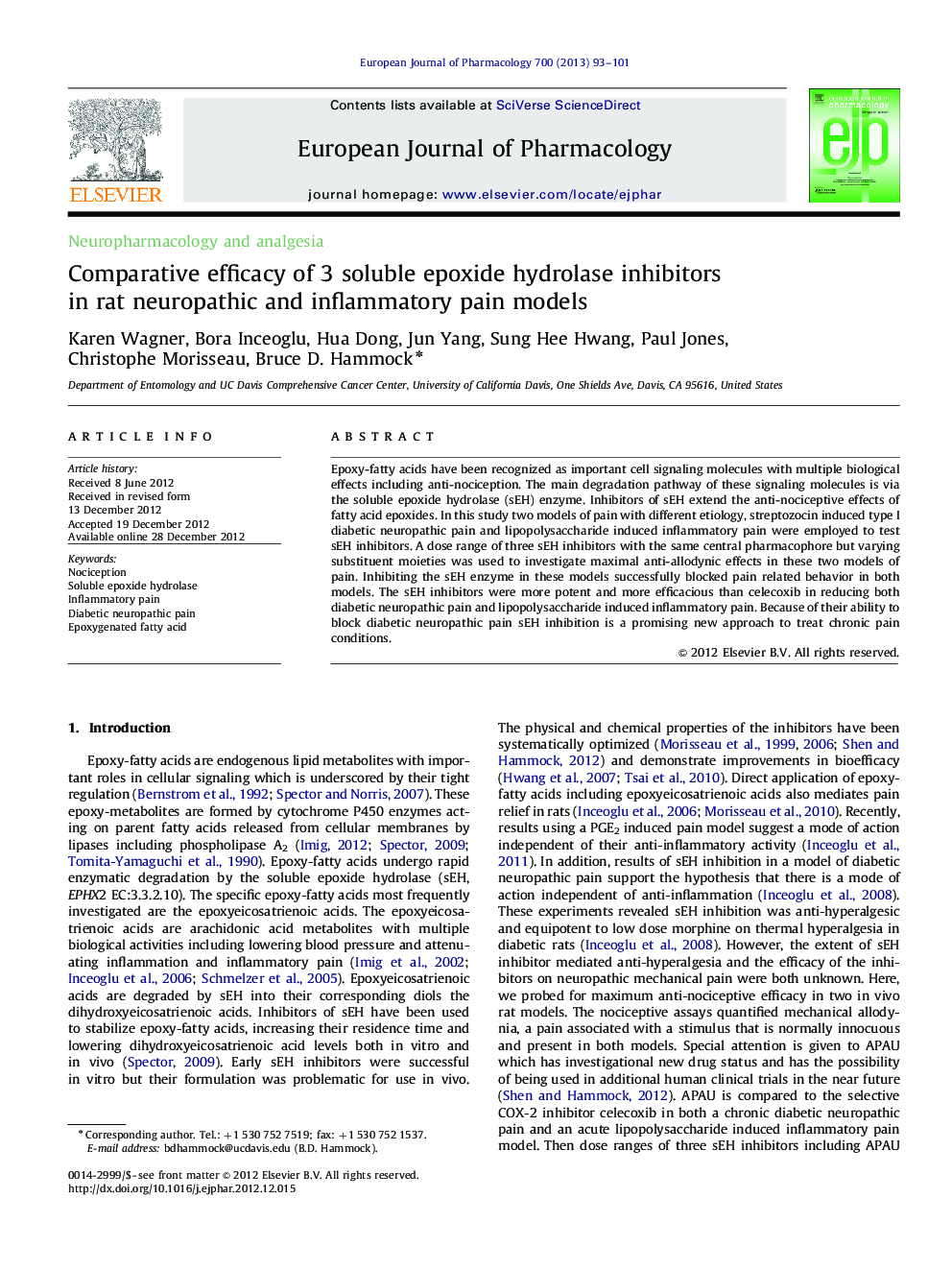| Article ID | Journal | Published Year | Pages | File Type |
|---|---|---|---|---|
| 5828844 | European Journal of Pharmacology | 2013 | 9 Pages |
Abstract
Epoxy-fatty acids have been recognized as important cell signaling molecules with multiple biological effects including anti-nociception. The main degradation pathway of these signaling molecules is via the soluble epoxide hydrolase (sEH) enzyme. Inhibitors of sEH extend the anti-nociceptive effects of fatty acid epoxides. In this study two models of pain with different etiology, streptozocin induced type I diabetic neuropathic pain and lipopolysaccharide induced inflammatory pain were employed to test sEH inhibitors. A dose range of three sEH inhibitors with the same central pharmacophore but varying substituent moieties was used to investigate maximal anti-allodynic effects in these two models of pain. Inhibiting the sEH enzyme in these models successfully blocked pain related behavior in both models. The sEH inhibitors were more potent and more efficacious than celecoxib in reducing both diabetic neuropathic pain and lipopolysaccharide induced inflammatory pain. Because of their ability to block diabetic neuropathic pain sEH inhibition is a promising new approach to treat chronic pain conditions.
Related Topics
Life Sciences
Neuroscience
Cellular and Molecular Neuroscience
Authors
Karen Wagner, Bora Inceoglu, Hua Dong, Jun Yang, Sung Hee Hwang, Paul Jones, Christophe Morisseau, Bruce D. Hammock,
